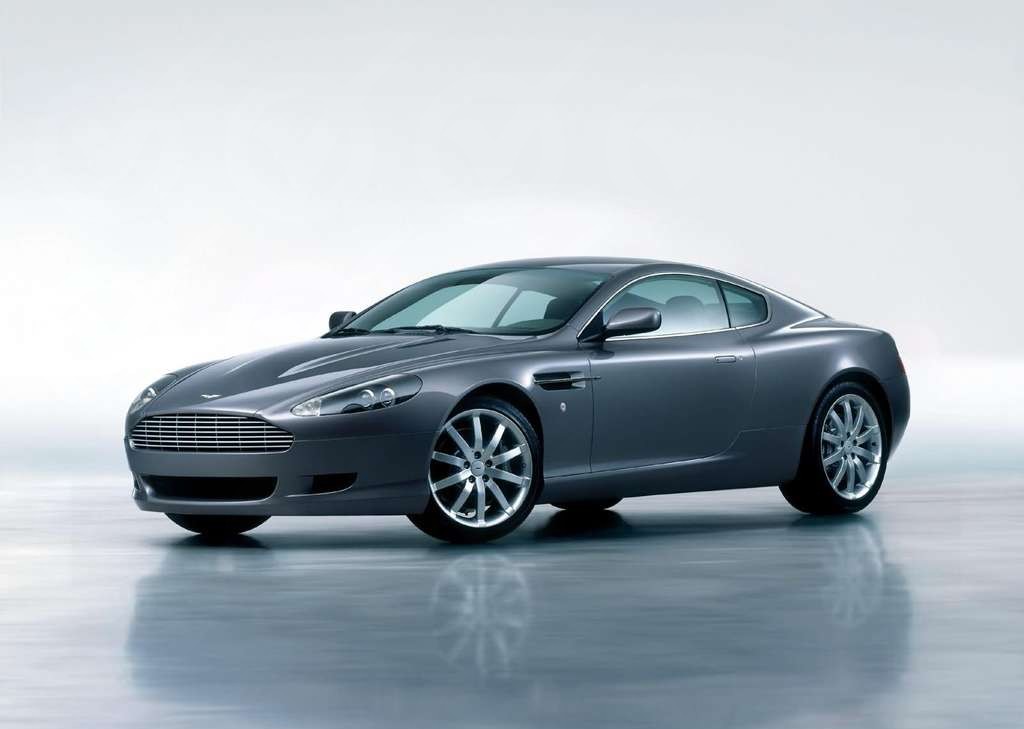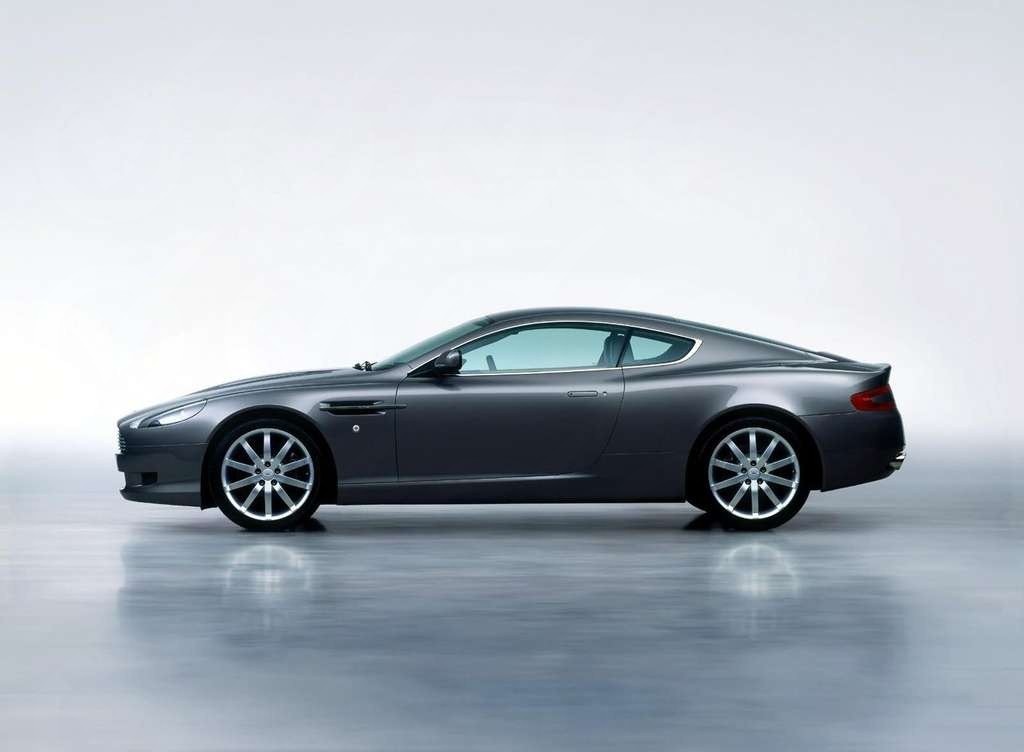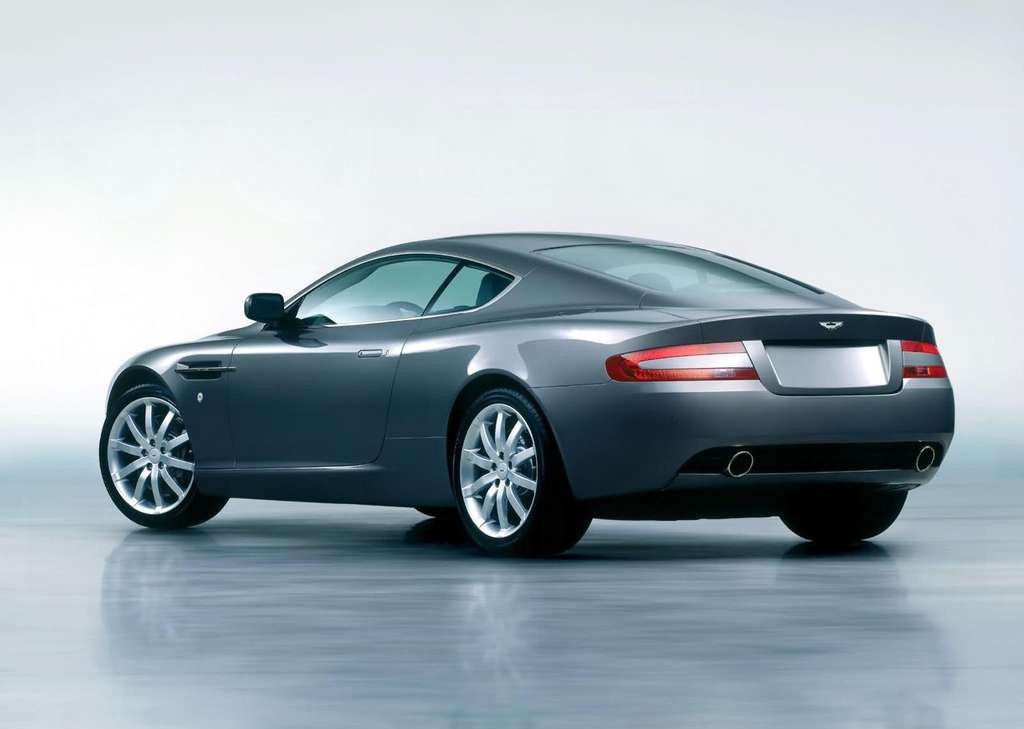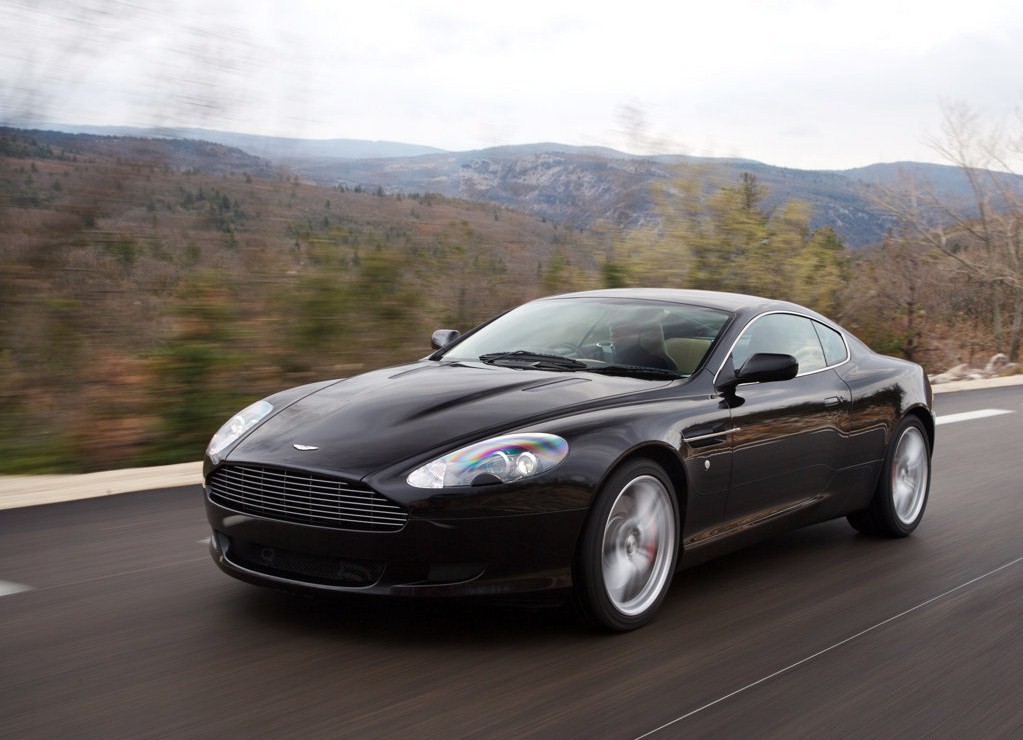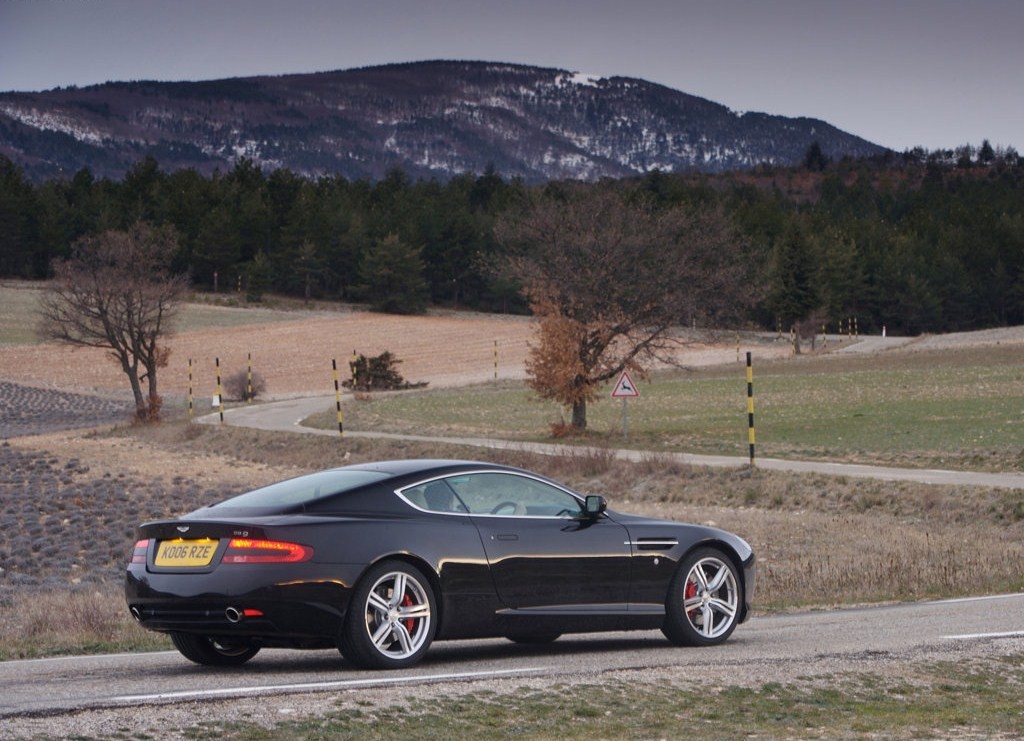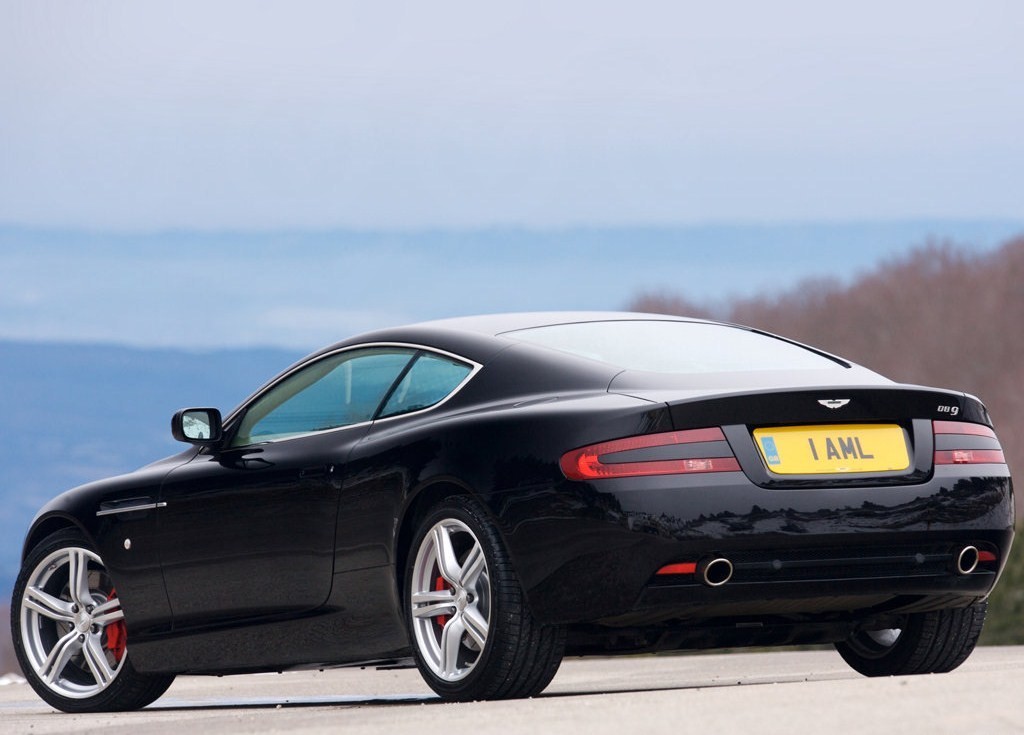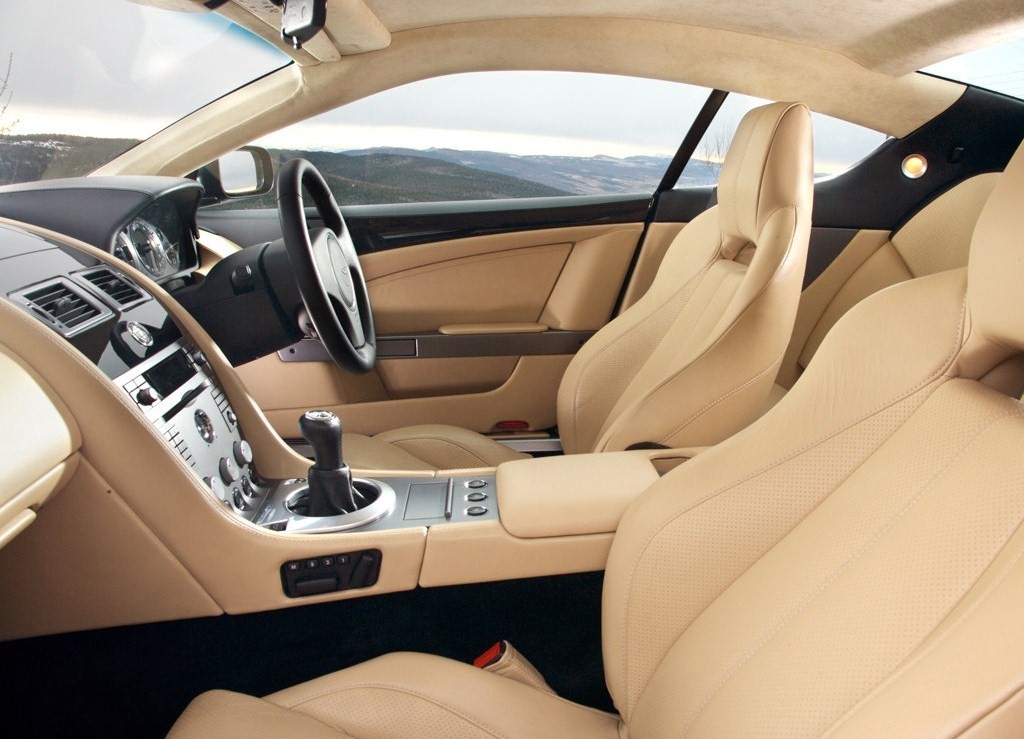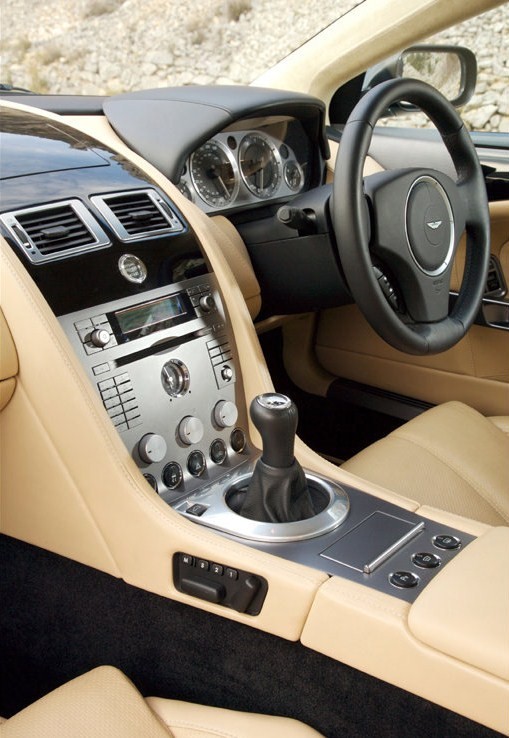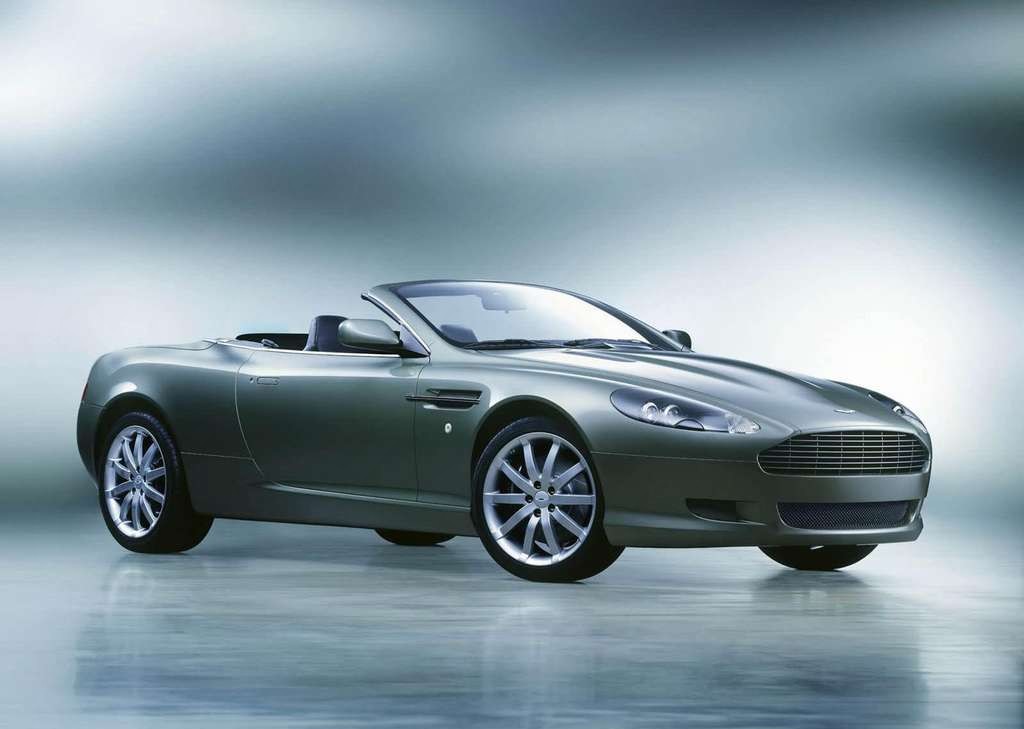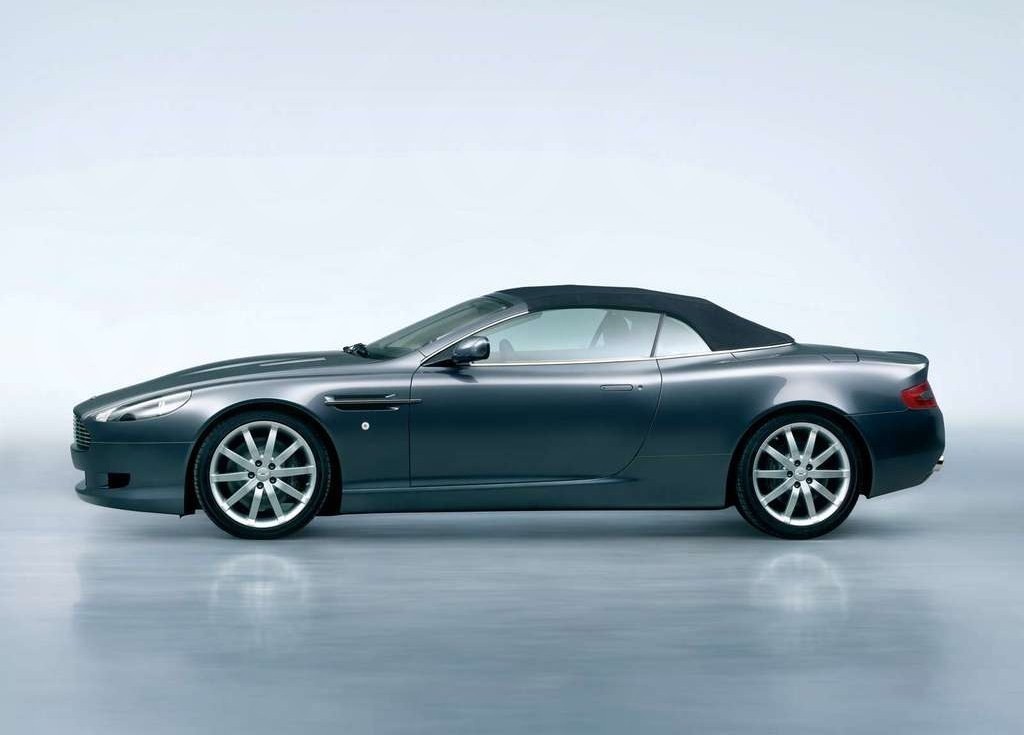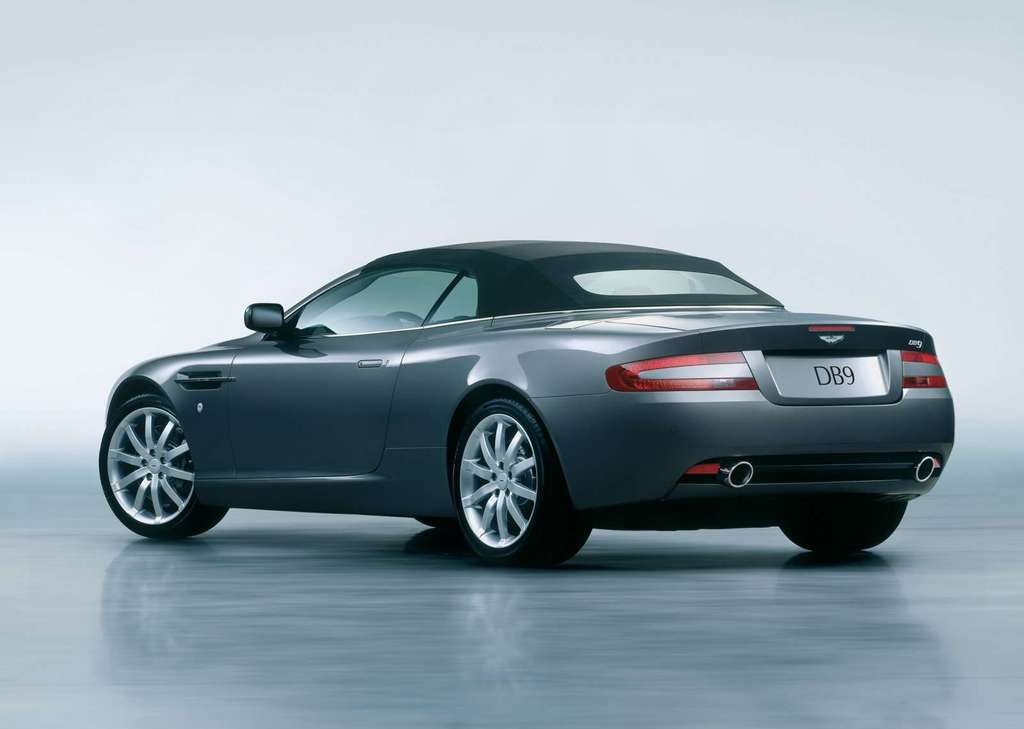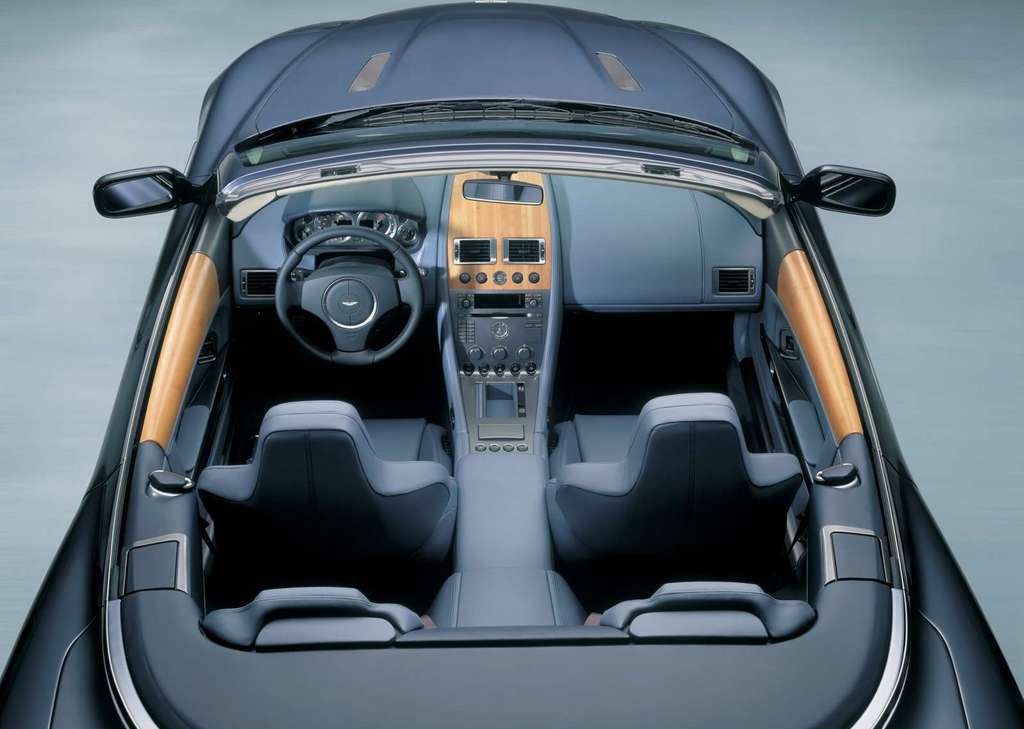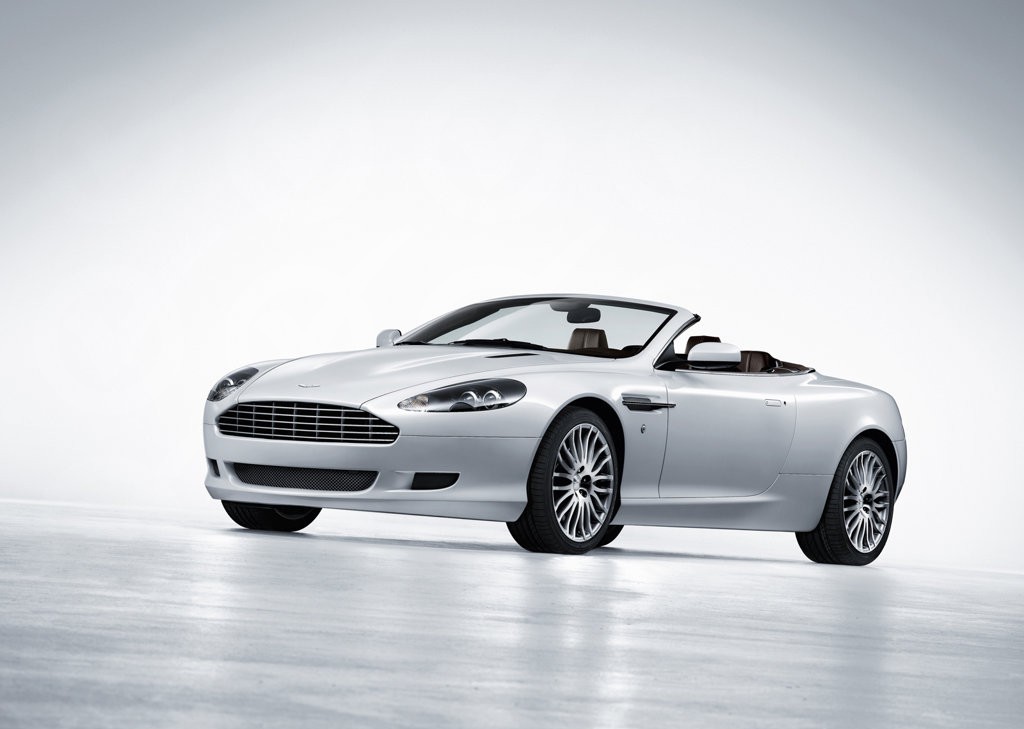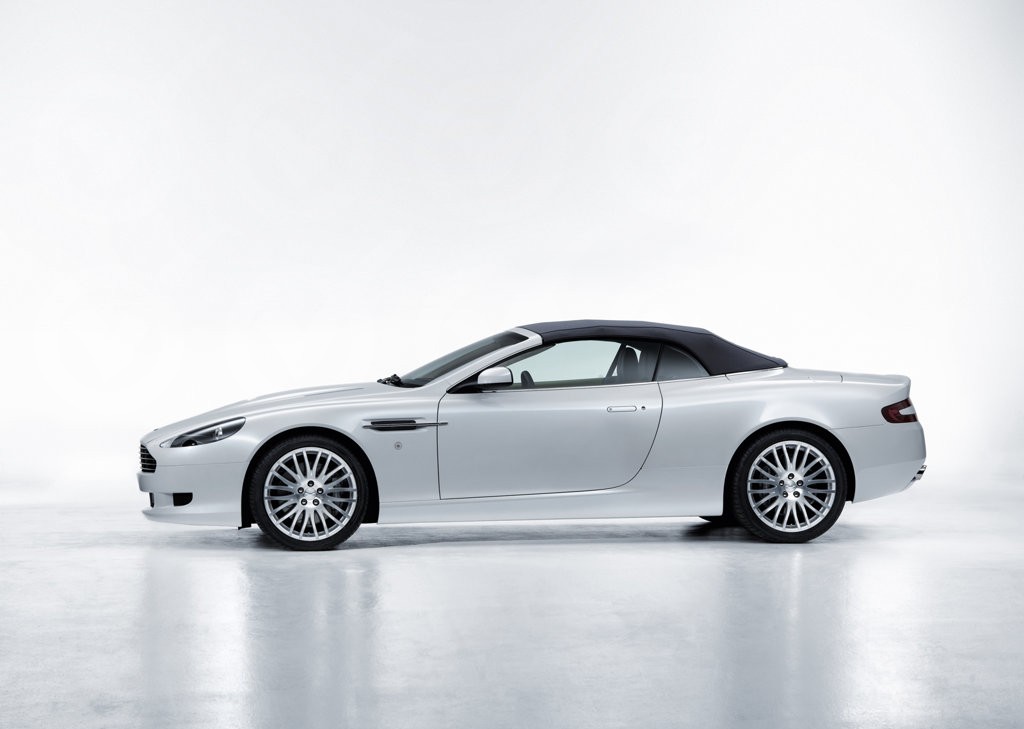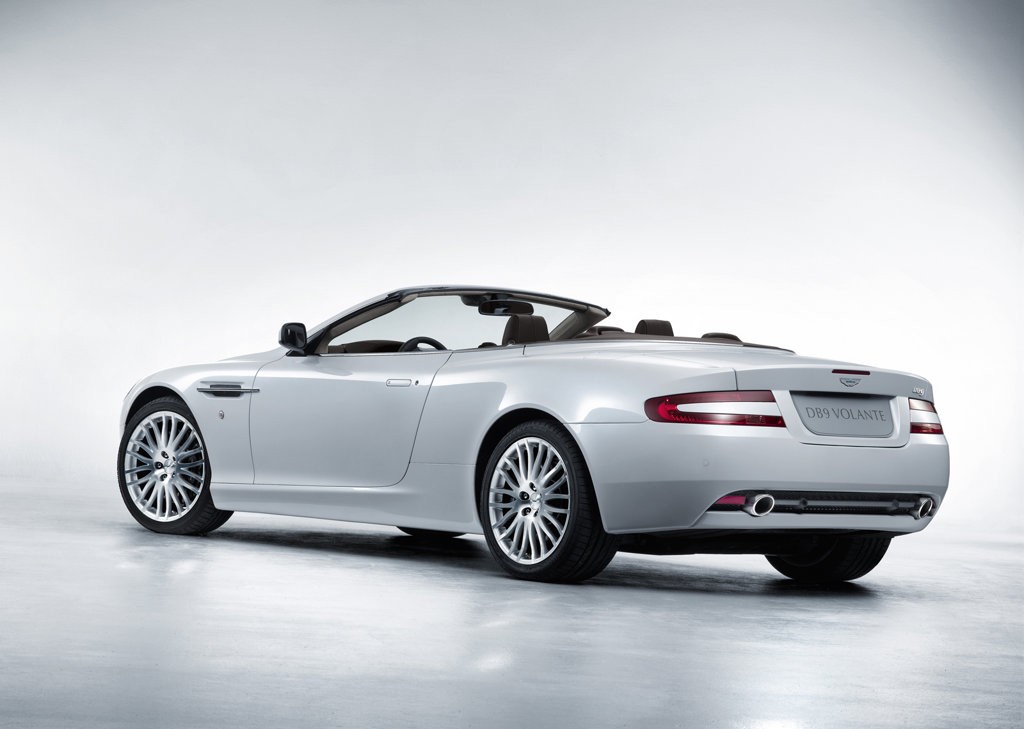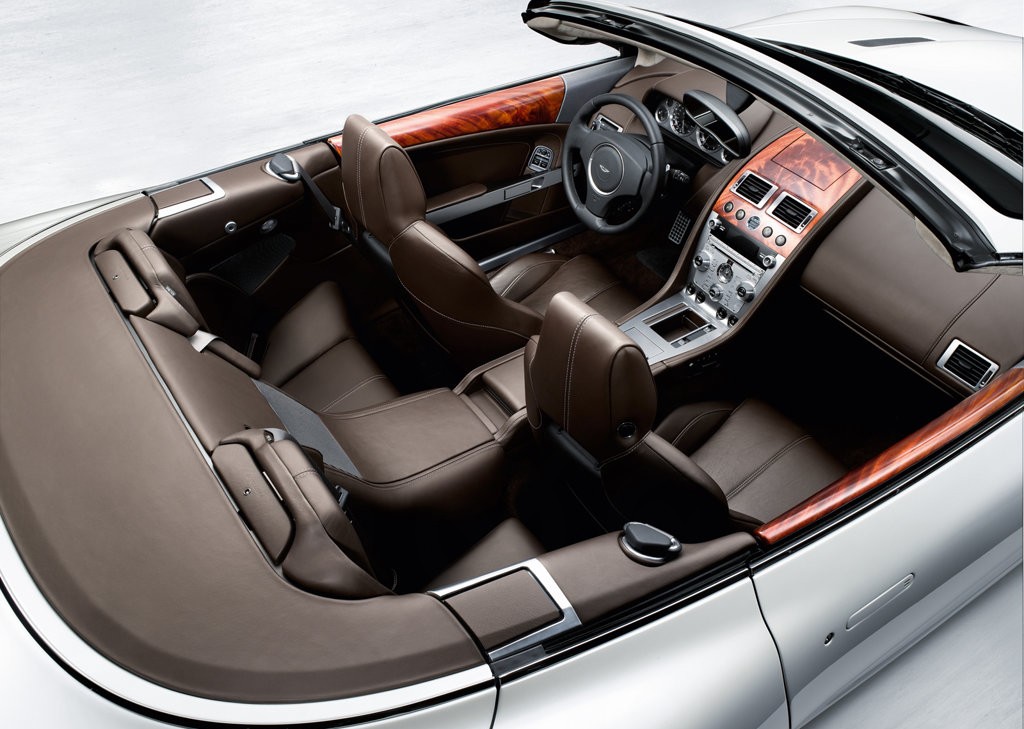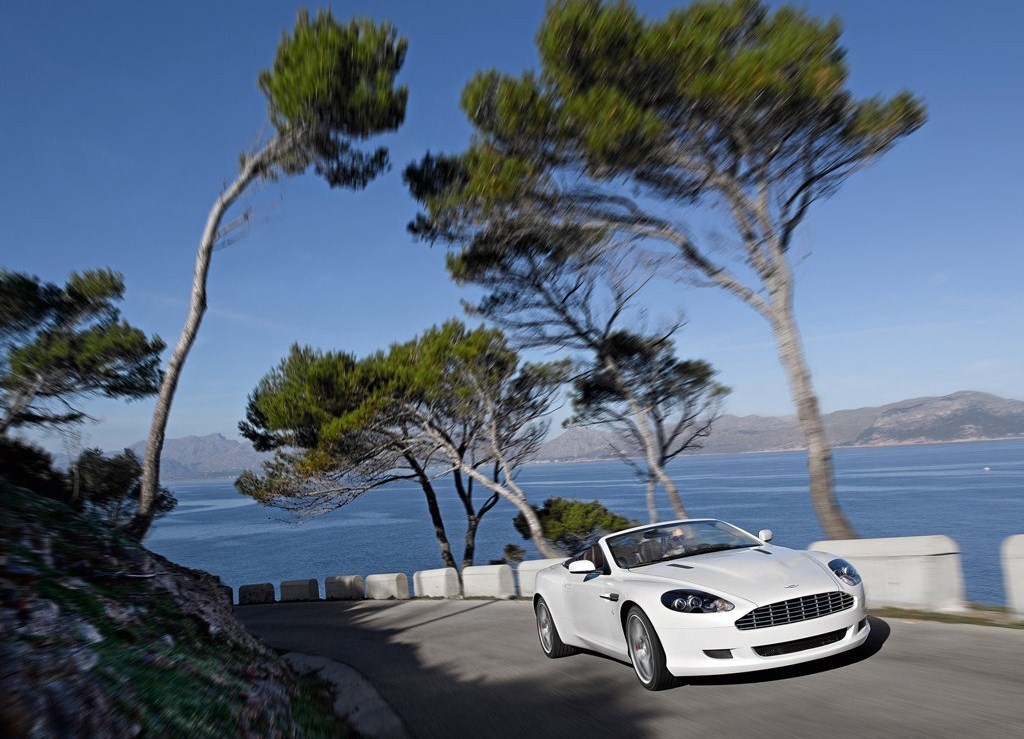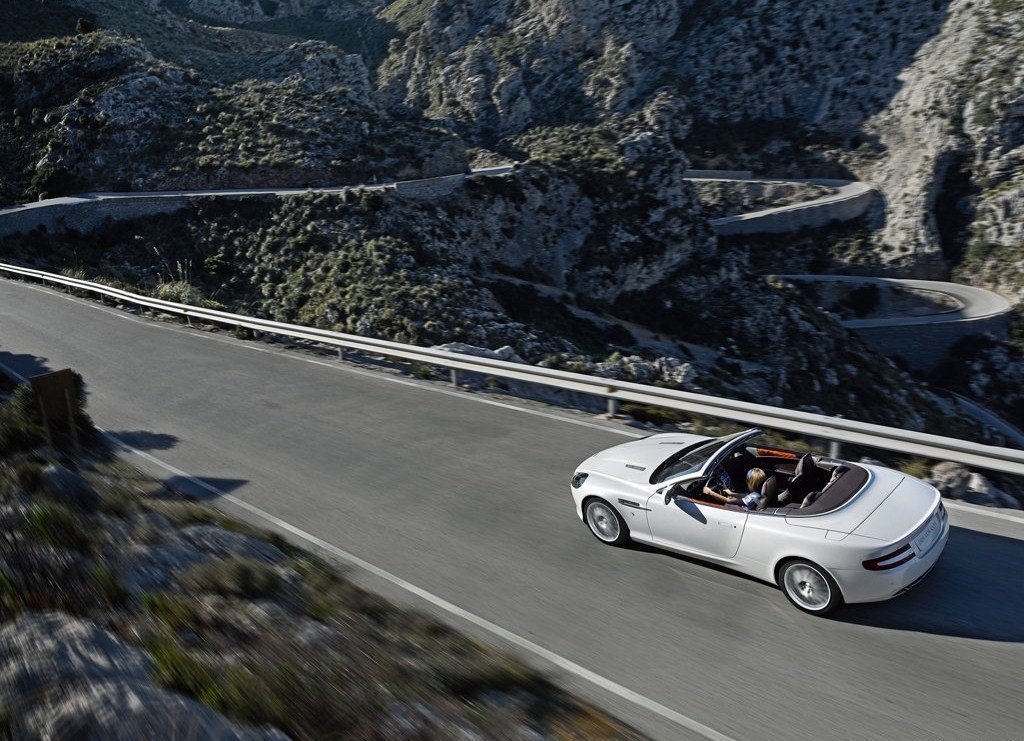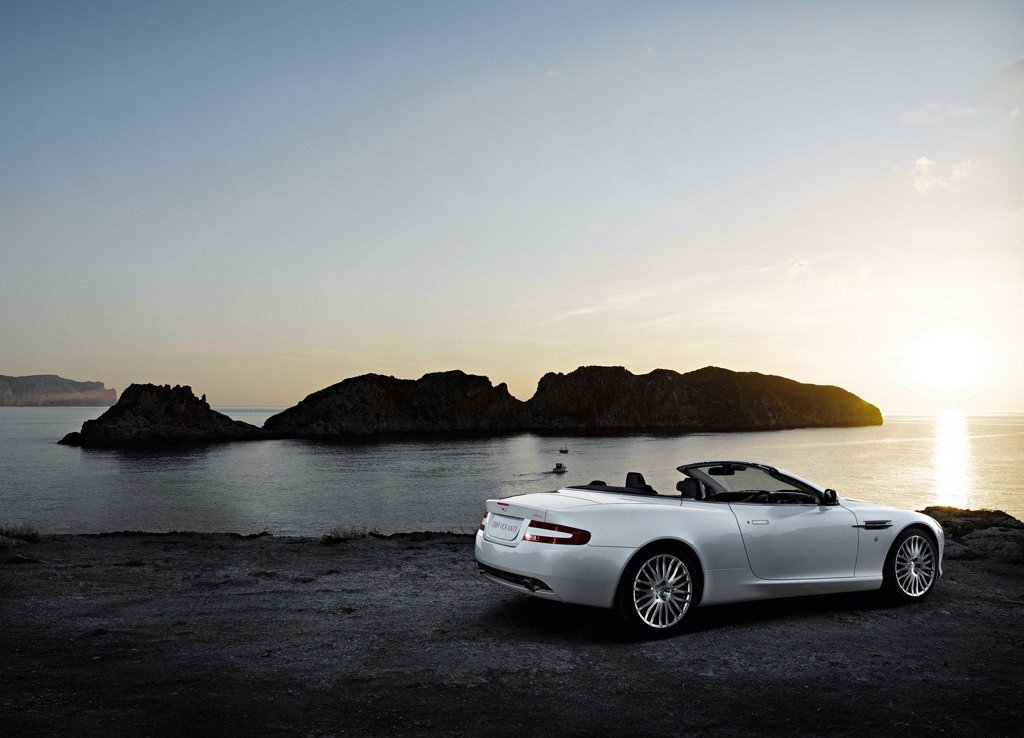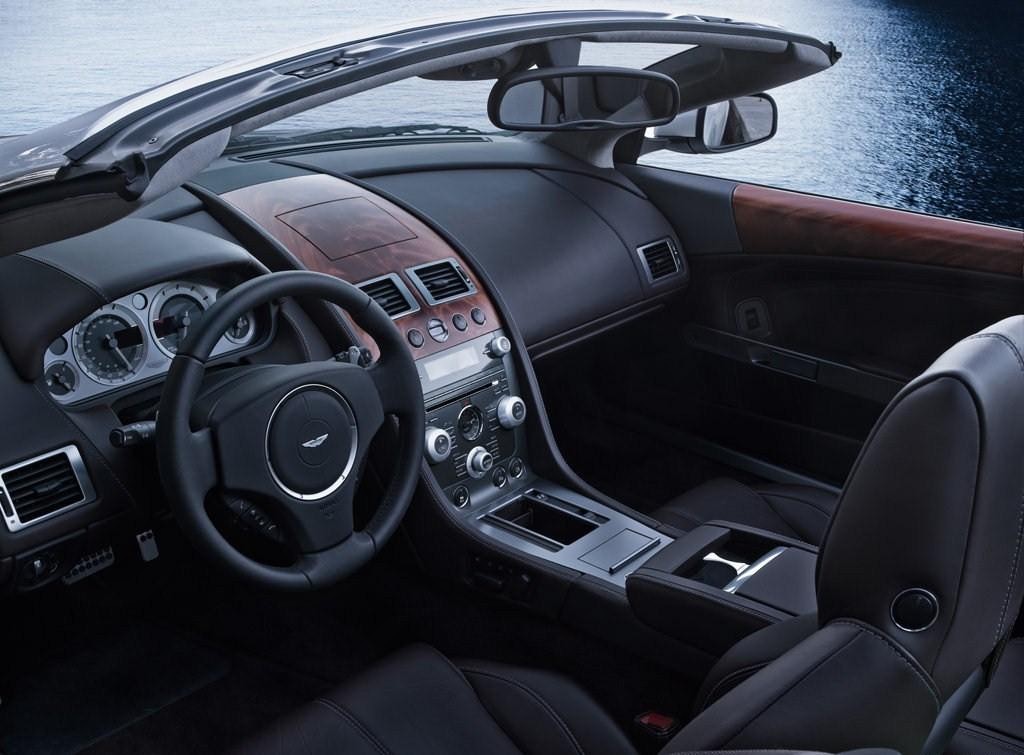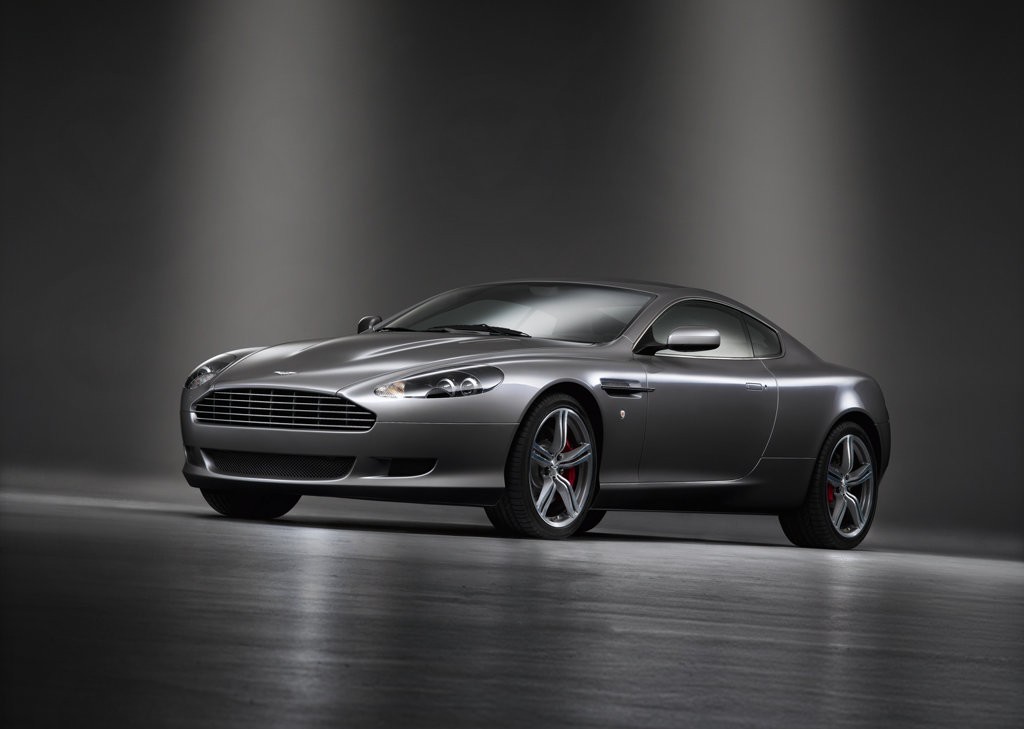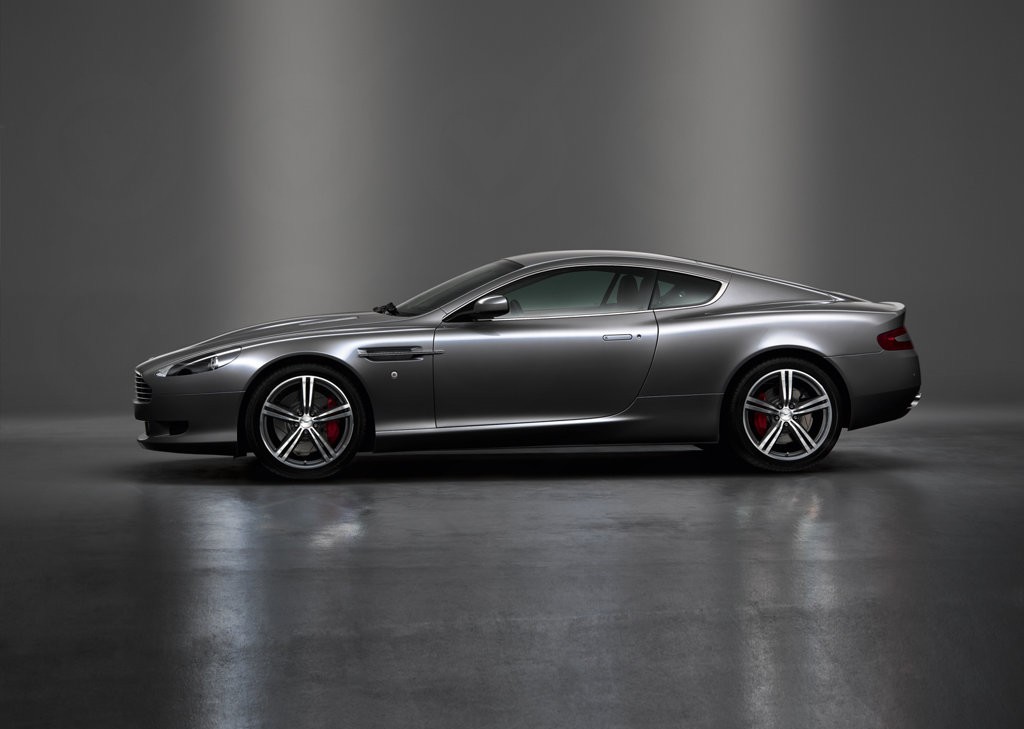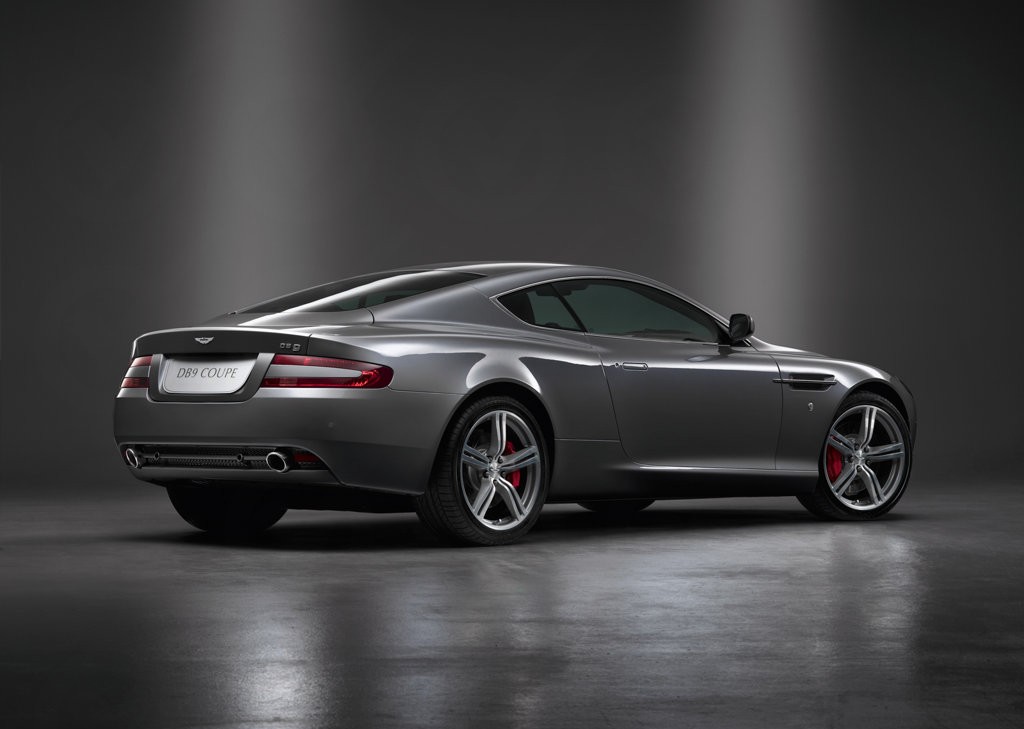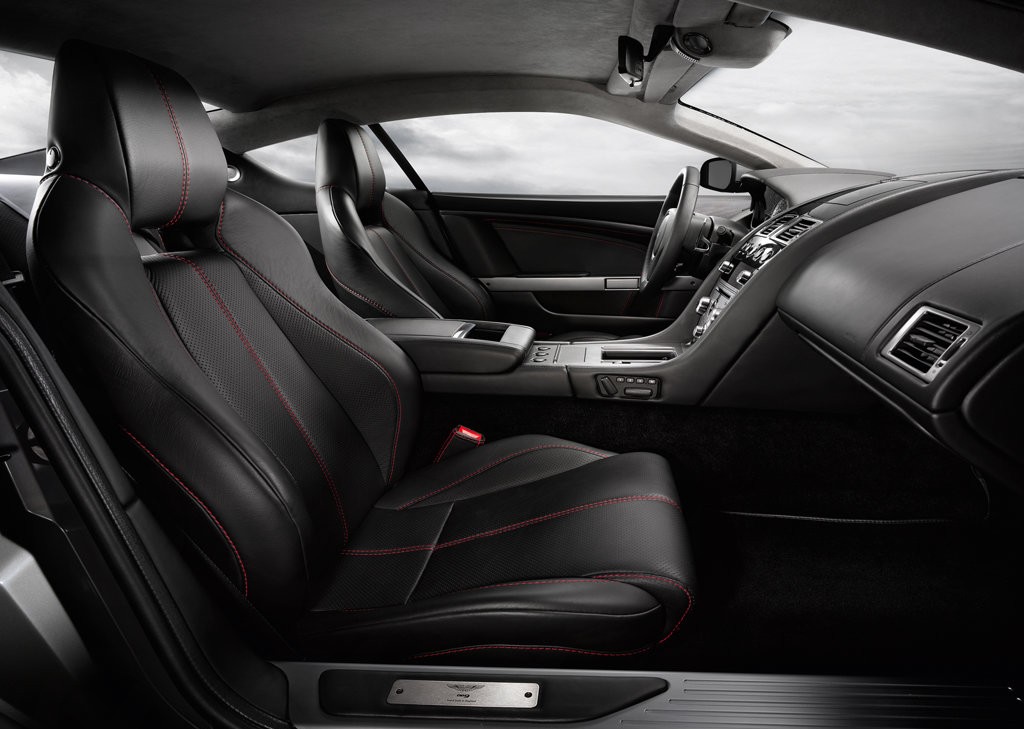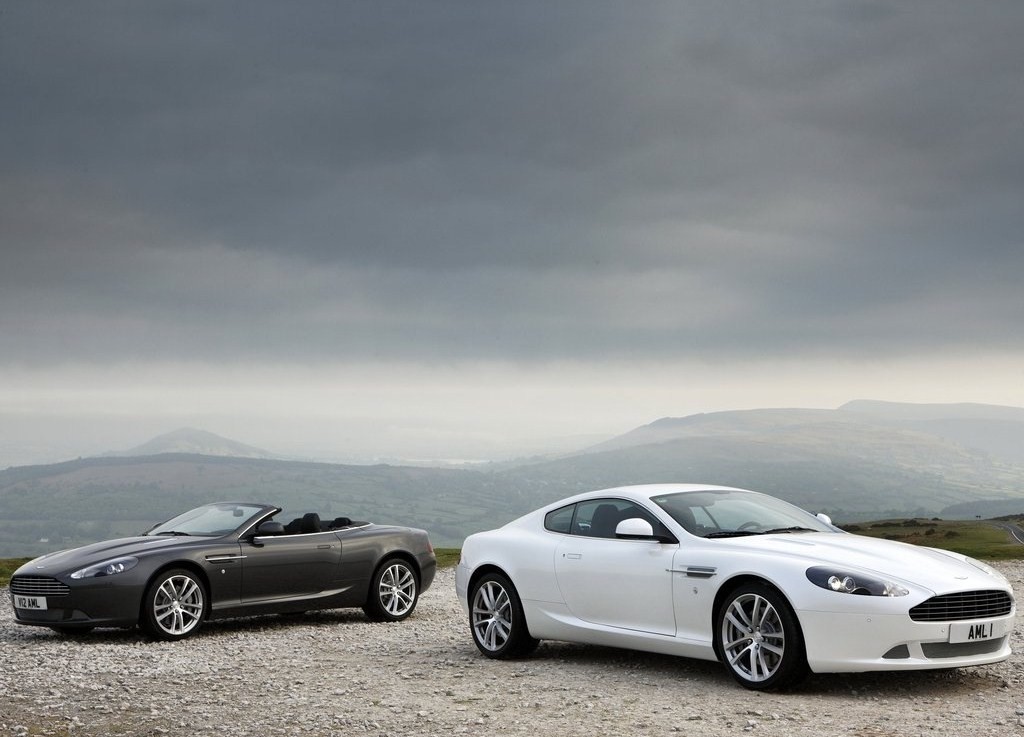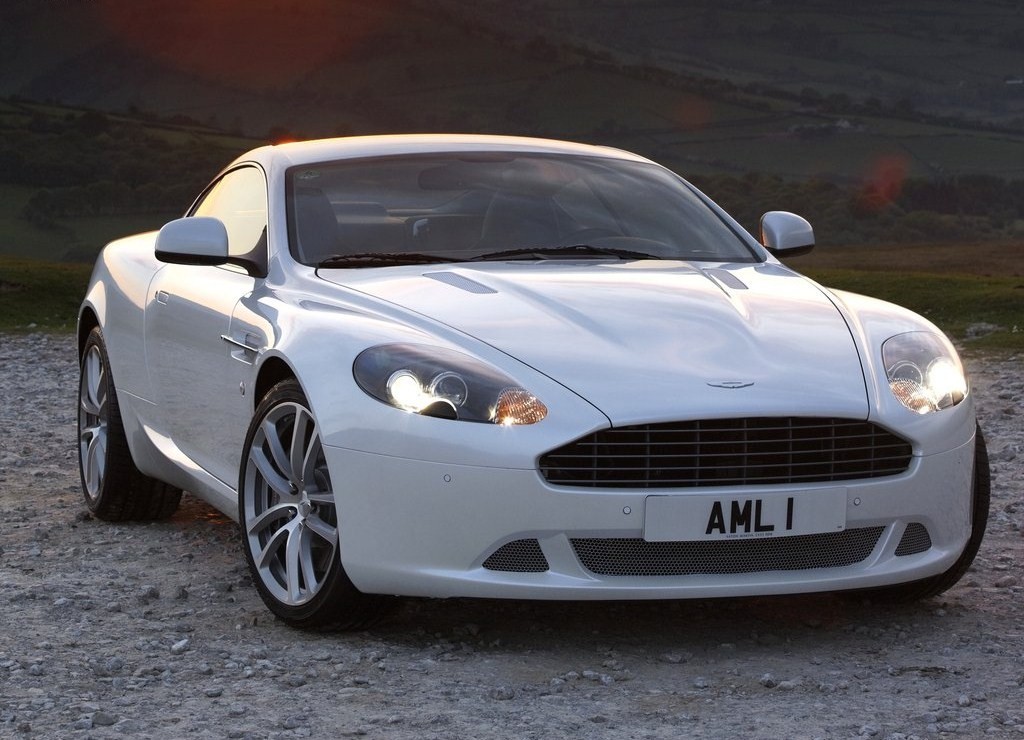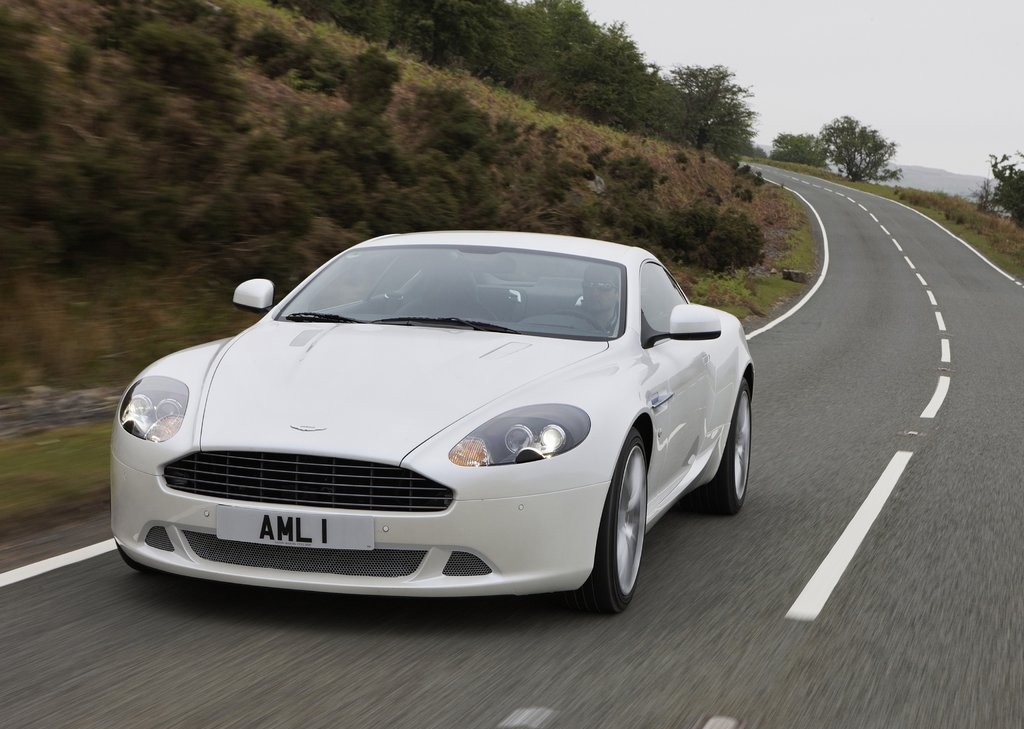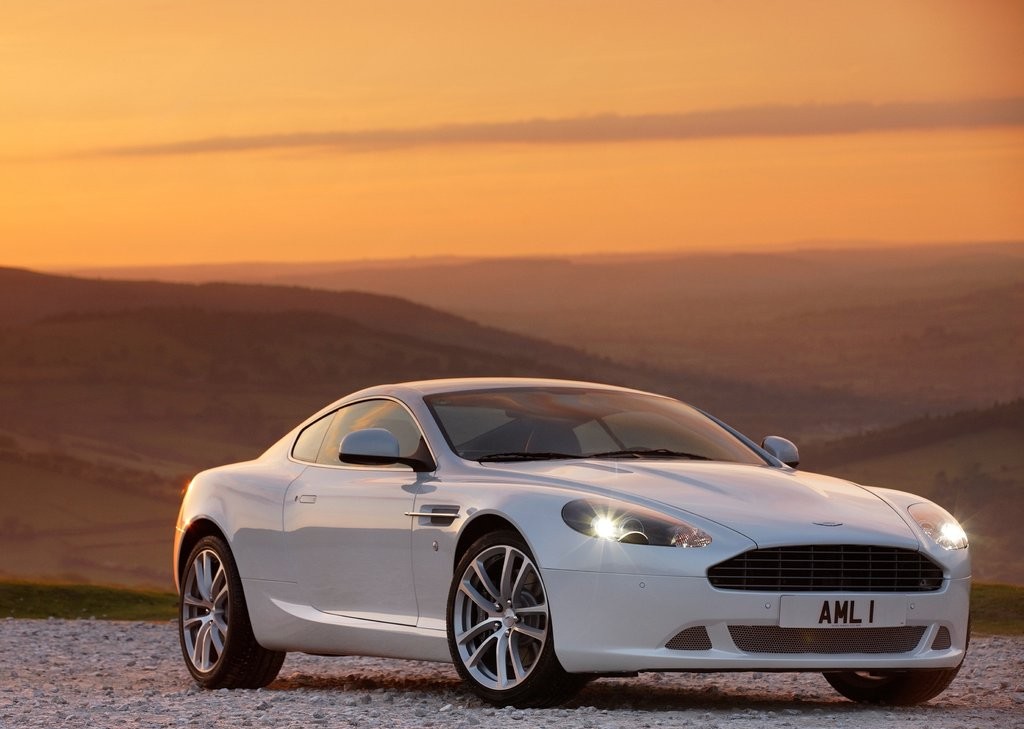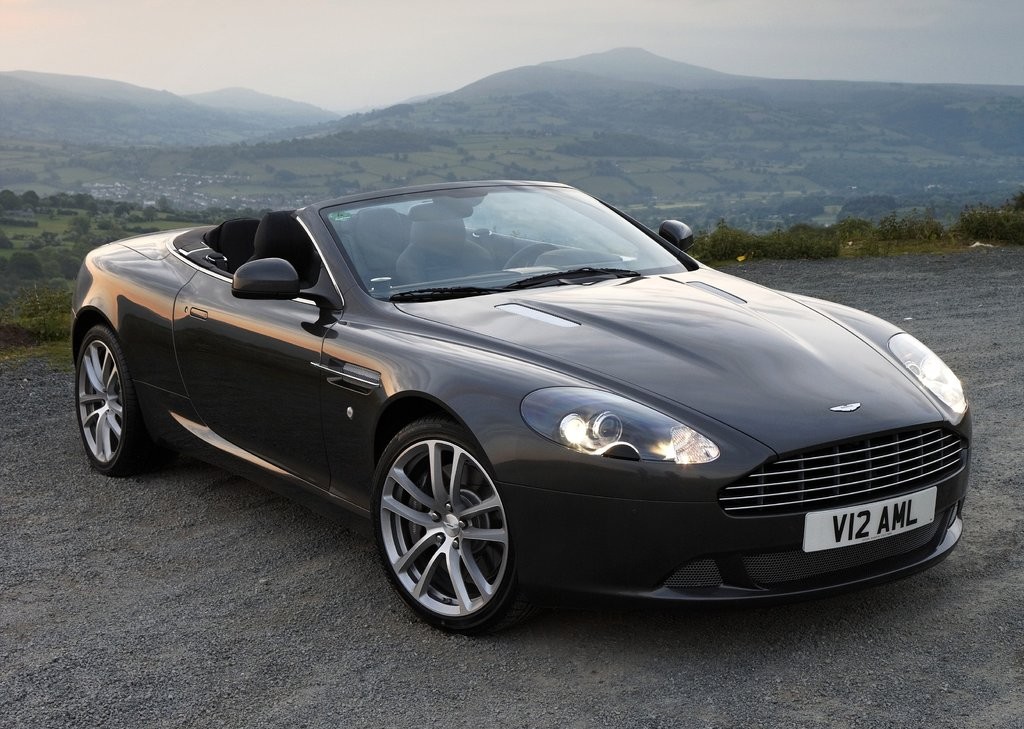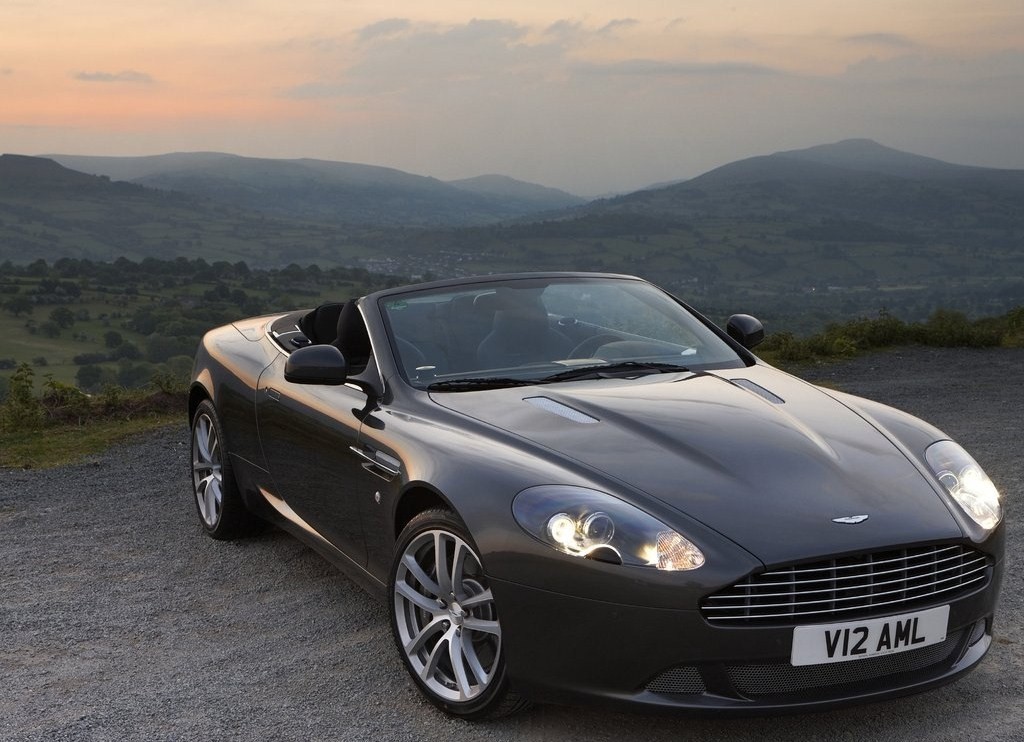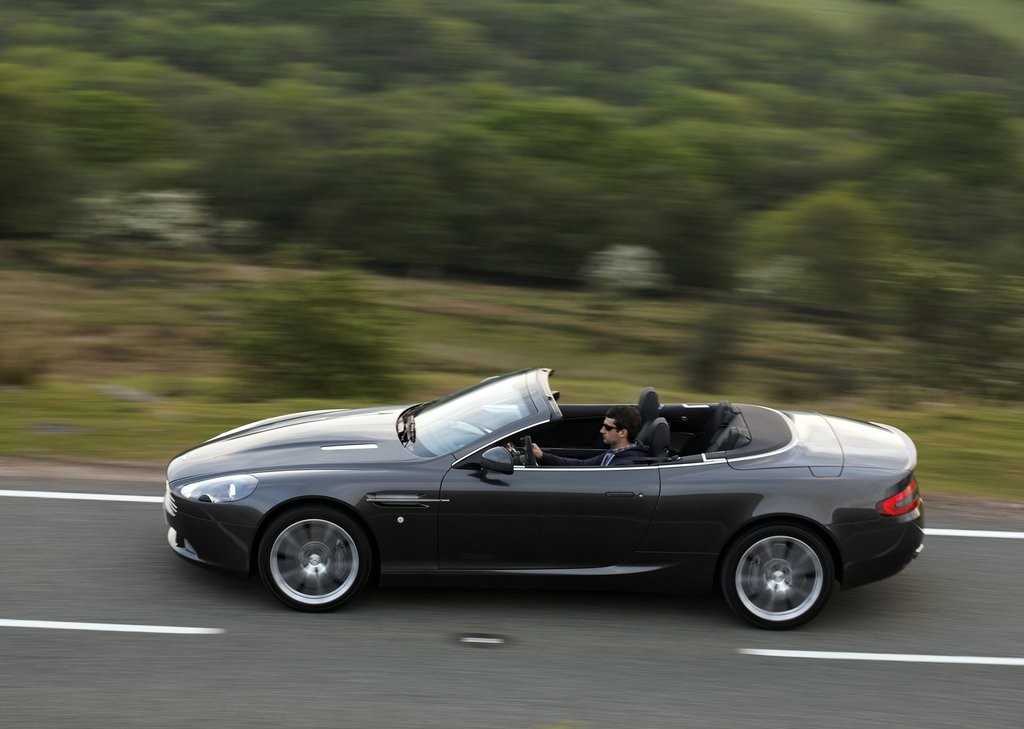
- Sirenesque V12 howl
- Excellent dynamics
- Engaging to drive
- Seductive styling and beautiful proportions
- V12 engine not as powerful as capacity suggests
- Cramped interior
- High running costs
Review: Aston Martin AM112.I DB9 (2005-08)
Overview
Released in January 2005, the Aston Martin AM112 Mk.I (AM112.I) DB9 was initially available as a two-plus-two coupe, with convertible (Volante) models following in September 2005. Manufactured in Gaydon, England, the DB9 was powered by a 5.9-litre V12 petrol engine that was mated to either a six-speed Graziano manual or ZF ‘Touchtronic 2’ automatic transmission (with steering wheel gearshift paddles).
Hand built in Köln, Germany, the all-alloy 5935 cc V12 petrol engine had double overhead camshafts (per cylinder bank), four valves per cylinder, Visteon engine management, a compression ratio of 10.3:1 and a stainless steel exhaust system (with a bypass valve).
Compared to the Aston Martin DB7 which it replaced, the DB9 coupe was 5 mm longer (at 4697 mm), 45 mm wider (1875 mm), 75 mm taller (1318 mm) and had a 149 mm longer wheelbase (2740 mm). Significantly, the DB9 had an extruded aluminium monocoque chassis with aluminium and composite skin panels bonded with strong adhesives and supplemented by self-piercing rivets. As a result, the DB9’s chassis had more than double the torsional rigidity but was 25 per cent lighter.
The DB9 had all-round independent double-wishbone suspension, with the front suspension mounted on a cast aluminium subframe; at the rear, another subframe carried the rear suspension and rear transaxle.
| Body | Engine | Trans. | Peak power | Peak torque |
|---|---|---|---|---|
| Coupe, Volante |
5.9-litre petrol V12 | 6sp man., 6sp auto |
336 kW at 6000 rpm | 570 Nm at 5000 rpm |
Safety equipment
Standard safety equipment included dual front airbags, front side airbags, ABS, electronic brake force distribution, brake assist, electronic stability control, traction control and front seatbelt pretensioners. The Volante was also fitted automatically deploying pop-up rollover hoops.
Brakes
The DB9 was fitted with ventilated and grooved 355 mm front brake discs with four-piston Brembo monobloc calipers and ventilated 330 mm rear discs with four-piston monobloc calipers.
Features
Standard features for the Aston Martin AM112 DB9 included 19-inch alloy wheels, a three speaker stereo with a six-disc CD player, dual-zone climate control air conditioning, power adjustable front seats, Bridge of Weir leather upholstery, bi-xenon headlights, rain-sensing wipers, automatic headlights, a leather-wrapped steering wheel, remote central locking, power windows and heated mirrors, a tilt and reach adjustable steering wheel, trip computer, an alarm and immobiliser. The DB9 was also fitted a limited slip differential.
Beyond this, the DB9 Volante had a power-operated soft-top roof which could retract in 17 seconds and be stored under a hard tonneau cover.
Related links
- Guide: Aston Martin DB7, V12 Vanquish and DB9 (February 2004)
- Brochure: Aston Martin AM112.I DB9 (April 2004)
- Brochure: Aston Martin AM112.I DB9 (July 2006)
Review: Aston Martin AM112.II DB9 (2008-10)
Overview
Released in May 2008, the AM112 Mk.II (AM112.II) DB9 introduced a more powerful V12 engine, a revised interior and subtle cosmetic updates, while the ‘Touchtronic 2’ automatic transmission had a new hydraulic control box for faster and smoother gearshifts. Furthermore, the Mk.II DB9 was more refined due to the introduction of Bilstein dampers, revised upper suspension arms and retuned suspension bushes; thicker glass also reduced interior noise. The DB9 Volante also benefited from revisions to the front shear panel which increased torsional rigidity by 10 per cent.
Visually, the Mk.II DB9 could be identified by its anodised aluminium five-bar grille, redesigned door mirrors and new ten-spoke alloy-wheel designs. Inside, there was a redesigned centre console – similar to that used in the DBS – constructed from die-cast zinc with a painted iridium silver finish. Furthermore, an ‘Emotion Control Unit’ constructed from glass, polished stainless steel and polycarbonate replaced the key-based ignition system.
| Body | Engine | Trans. | Peak power | Peak torque |
|---|---|---|---|---|
| Coupe, Volante |
5.9-litre petrol V12 | 6sp man., 6sp auto |
350 kW at 6000 rpm | 600 Nm at 5000 rpm |
Features
Compared to its Mk.I predecessor, standard features for the Mk.II DB9 were extended to include a seven speaker stereo with auxiliary inputs (3.5mm/USB/iPod), satellite navigation, heated front seats, cruise control, Bluetooth connectivity, voice recognition, rear parking sensors, memory settings (front seats and door mirrors) and tyre pressure monitoring.
Related links
Review: Aston Martin AM112.III DB9 (2010-12)
Overview
Released in August 2010, the AM 112 Mk.III (AM112.III) DB9 introduced Aston Martin’s Adaptive Damping System (ADS) as standard across the range, providing continual damping adjustment for improved ride quality and a selectable ‘sport’ mode.
Visually, the AM112.III DB9 could be identified by its new 20-spoke diamond-turned alloy wheels, front bumper, bright finish radiator grille, re-profiled lower air-intake with hexagonal mesh, restyled side sills, silver brake calipers and clear lens tail-lights. Inside, there was ‘Double Apex’ alloy-look interior trim.
| Body | Engine | Trans. | Peak power | Peak torque |
|---|---|---|---|---|
| Coupe, Volante |
5.9-litre petrol V12 | 6sp man., 6sp auto |
350 kW at 6000 rpm | 600 Nm at 5000 rpm |
Features
Compared to its Mk.II predecessor, features for the Mk.III DB9 were extended to include tyre pressure monitoring; the Bluetooth microphone system was also revised.
Brochure
Related links
